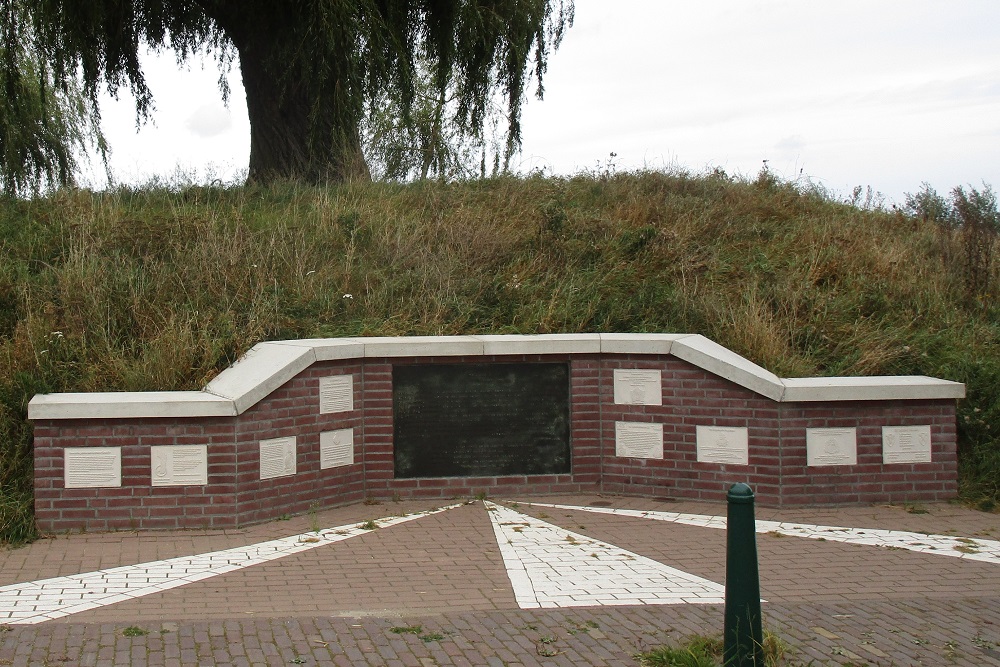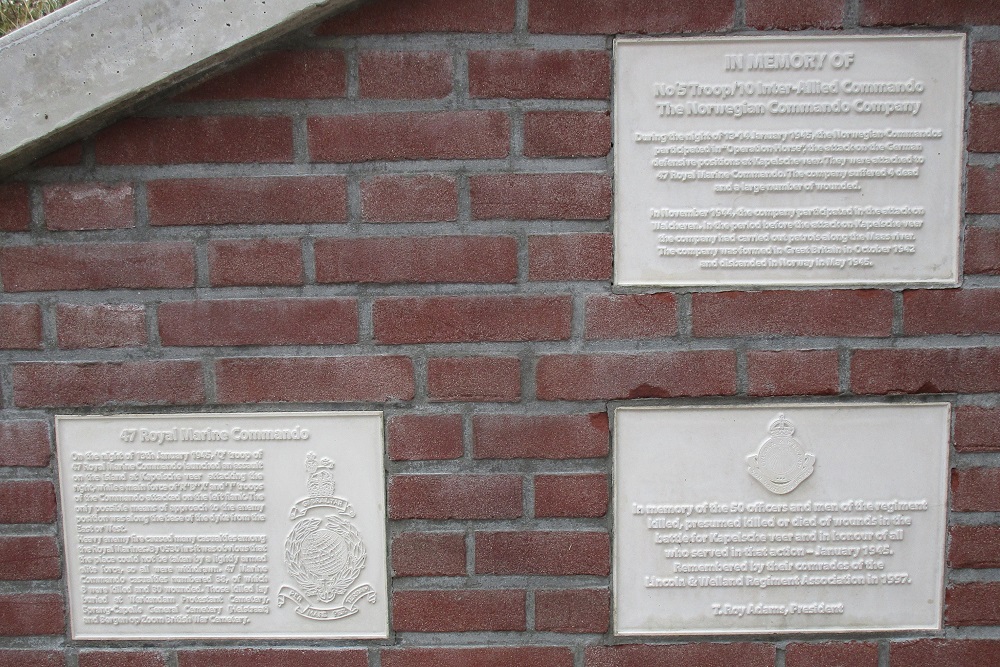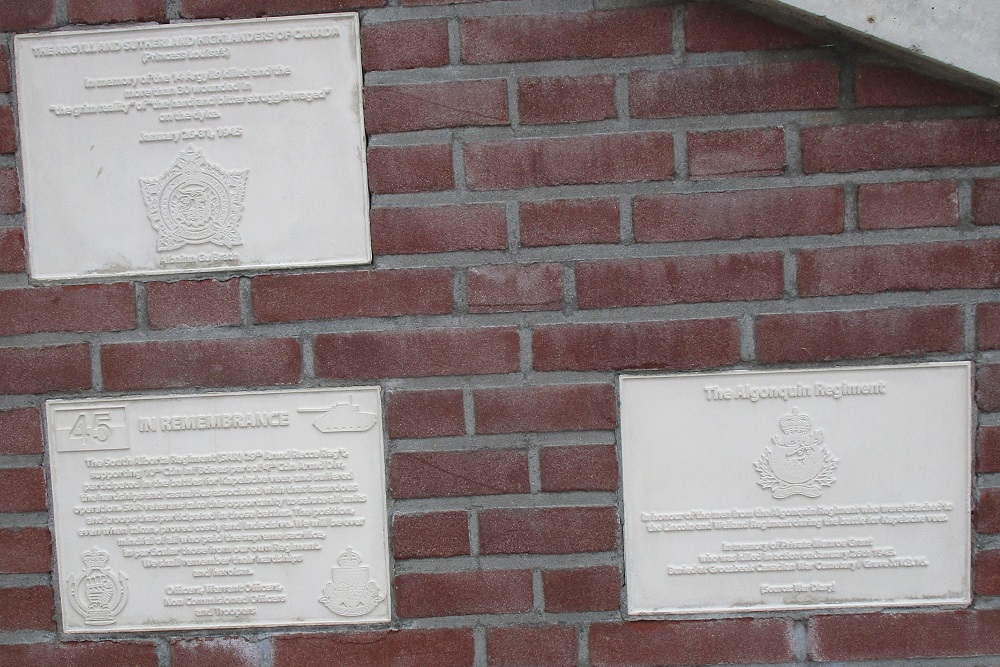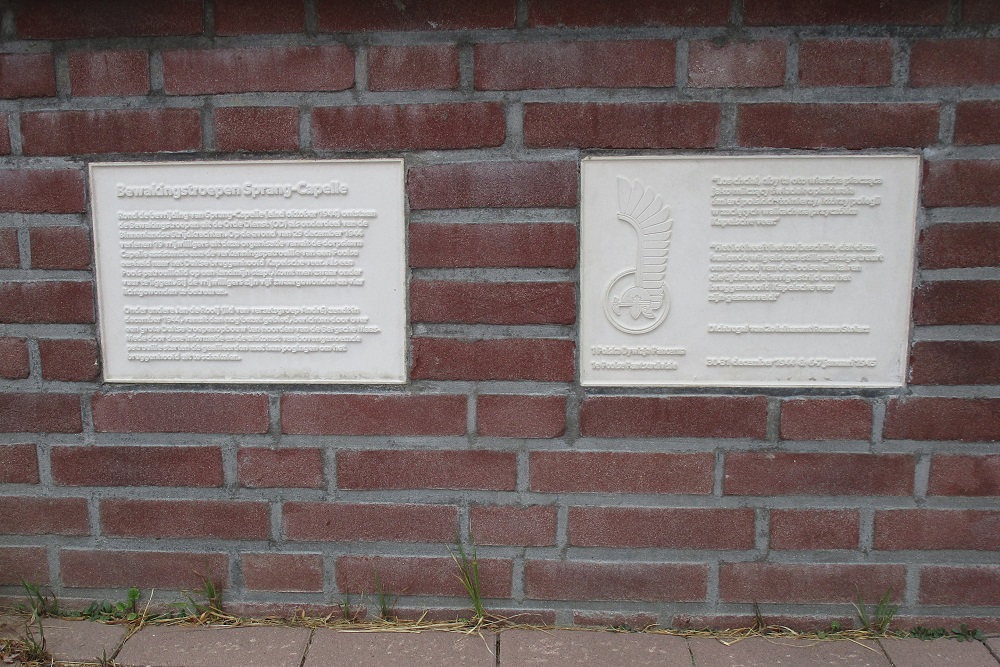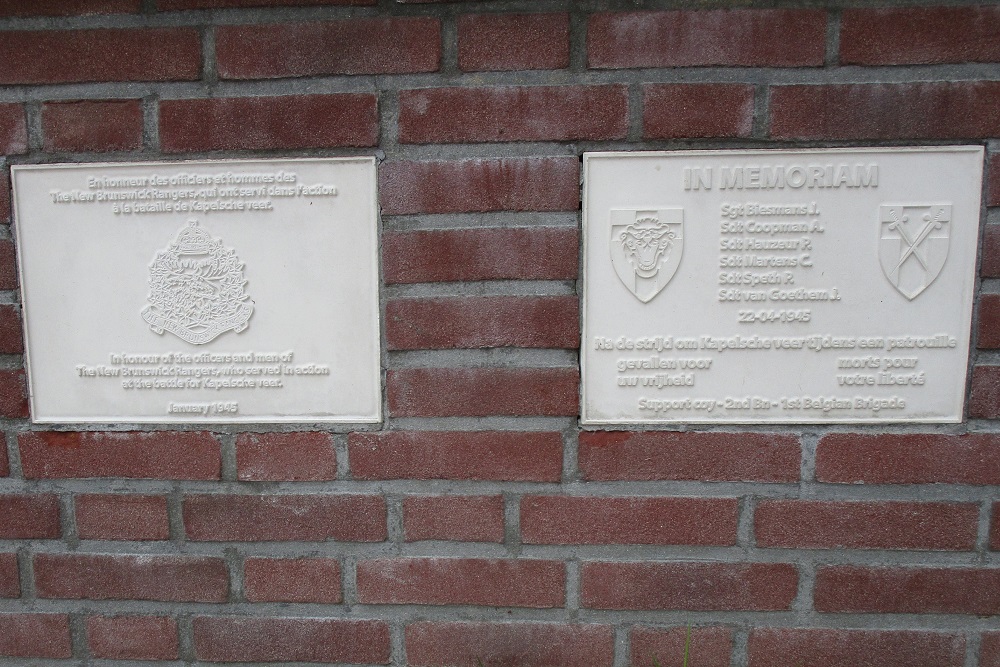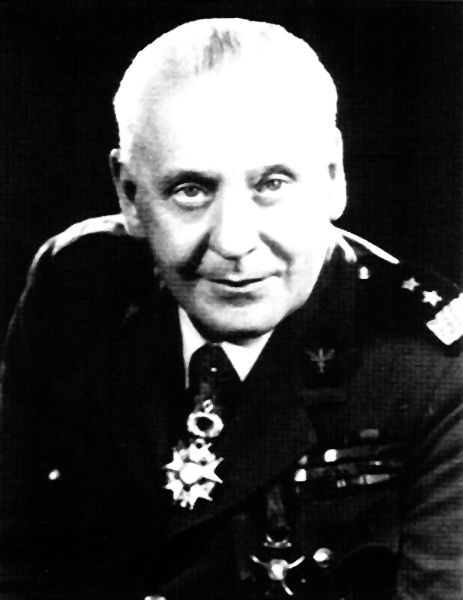Memorial Battle Kapelsche (Capelse) Veer
In 1944 there was a German bridgehead at this location on the Bergsche Maas. Four attacks were made by Poles, British and Canadians. It took a total of 5 weeks.
The first failed attack by the 1st Polish Armored Division was on the night of December 30-31, 1944.
The second failed attack by the 1st Polish Armored Division was on the night of 6/7 January 1945.
The third failed attack by British and Norwegians was on the night of January 13 to 14, 1945.
The fourth attack was made by the 4th Canadian Armored Division from January 26 to January 31, 1945. This attack succeeded, on January 31, 1945 the Germans withdrew.
In total, almost 1200 victims were killed during these four attacks.
On January 26, 2018, a renewed monument was placed. The large central plaque has been replaced. The other 4 small plaques have been replaced by 10 small white plaques.
The text on the large plaque reads:
WORLD WAR II
CAPELSCHE VEER 1944-1945
AFTER THE ALLIED Advancing FROM NORMANDY IN 1944, THE MEUS FORMED THE BORDER BETWEEN
LIBERATED AND OCCUPIED THE NETHERLANDS. THE MAASFRONT WAS GUARDED BY THE 1ST POLISH
ARMOR DIVISION. THE POLISH SOLDIERS HAD BEEN QUARTERED WITH THE LOCAL POPULATION.
ON DECEMBER 16, 1944, THE GERMANS UNLEASHED THEIR LAST GREAT OFFENSIVE IN THE ARDENNES.
IN THE NEXT NIGHTS, GERMAN PARACHUTISTS CROSSED THE BERGSCHE MAAS TO
ALSO TO SURPRISE THE ALLIES HERE. WARNED BY THE RESISTANCE GROUP ANDRÉ
ATTACKED THE POLES. IN INITIALLY HOPELESS FIGHT -THE POLDERLAND OFFERED LITTLE
COVERING AND DESPITE BRITISH REINFORCEMENTS THEY RUN IN FRONT OF THE GERMAN POSITIONS.
ON JANUARY 29, 1945, WITH THE DEPLOYMENT OF CANADIAN TROOPS, TANKS AND ARTILLERY THE BATTLE WAS
RESOLVED. THERE WERE AROUND 350 ALLIED KILLED AND WOUNDED.
THE PEOPLE OF THIS REGION IN THAT LAST WAR WINTER
SAVED FOR NEW TRIALS, LIVED FOR FORTY YEARS
FORWARD IN FREEDOM. THE MEMORY OF THOSE SO NEAR THE
DEFENDING FREEDOM GOT STRONGER AS TIME PASSED.
SPRANG-CAPELLE, 4 MAY 1985.
The text on the information board to the right of the monument:
January 2018
Forty years after the battle for Kapelsche Veer (December 30, 1944 – January 31, 1945), Sprang-Capelle took the initiative for a monument in memory of that heavy battle and in memory of the hundreds of dead and many wounded. In the following years, a total of four smaller plaques were added.
About thirty years later, various people, companies and organizations worked together to create a new monument, so that space could be created to honor even more units that were involved in the fighting. Together, the plaques tell part of the history of the battle for this bridgehead.
The central plaque of the old monument (1985-2016) has been replaced on the current monument. The text on this plaque should, with today's knowledge, read as follows:
WORLD WAR II
Kapelsche Veer 1944-1945
After the Allied advance from Normandy in 1944, the Bergsche Maas formed the border between the liberated and occupied Netherlands. A large part of this Meuse front was guarded by the 1st Polish Panzer Division. Many Polish soldiers were billeted with the local population.
Immediately after the liberation on October 30, 1944, German troops crossed the Bergsche Maas here a number of times to finally set up a bridgehead on this spot, from December 8. On December 16, 1944, the Germans unleashed their last major offensive in the Ardennes.
The Kapelsche Veer bridgehead seemed to play a role in this.
Warned by the resistance group André, among others, the Poles attacked the bridgehead. Under difficult circumstances - the polder land offered little cover - they carried out two attacks in vain. Subsequently, British and Norwegian commandos, supported by units of the 1st Polish Armored Division, mounted a third attack; even now the intended result did not materialise.
On January 31, 1945, after the deployment of Canadian infantry, tanks and artillery, the battle came to an end.
In total there were about 450 allied dead and wounded.
The people of this area lived on in freedom for forty years. The memory of those who fought a hard battle against the Germans here in that last winter of the war grew stronger as time passed.
SPRANG-CAPELLE, May 4, 1985
The 10 new plaques commemorate the fallen of:
plaque 1:
Guard troops Sprang-Capelle
plaque 2:
1st Polish Armored Division
plaque 3:
47 Royal Marine Commando
plaque 4:
No 5 Troop/10 Inter-Allied Commando
The Norwegian Command Company
plaque 5:
Lincoln & Welland Regiment Association in 1997
plaque 6:
The Argyll Sutherland Highlanders of Canada
plaque 7:
South Alberta Regiment (SAR)
plaque 8:
The Algonquin Regiment (Canada)
plaque 9:
The New Brunswick Rangers
plaque 10:
1st Belgian Brigade
Do you have more information about this location? Inform us!
Source
- Text: Dick de Bruijne
- Photos: Dick de Bruijne
Nearby
Point of interest
Monument
Cemetery
- Commonwealth War Graves Protestant Churchyard Waspik - Waspik
- Dutch War Grave Roman Catholic Cemetery Waspik - Waspik
- Commonwealth War Grave General Cemetery Capelle - Sprang-Capelle
Remembrance Stone
- Memorial Stone Hogevaart 86 - Sprang-Capelle
- Stumbling Stone Kerkpad - Eethen
- Memorial Stone Westeinde 48 - Waalwijk
Fortification
- Segmented Group Shelter Altena's Laantje - Almkerk
- Group Shelter Type 1916/II Woudrichemseweg - Almkerk
- World War I Defense Line Almkerk - Almkerk
